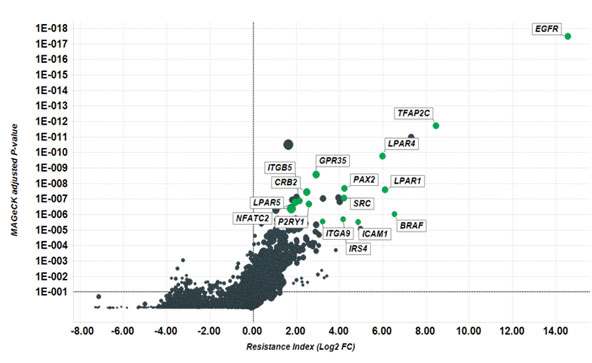CRISPRa application note
Read our CRISPRa application note showing transcriptional upregulation screening with genome-wide CRISPR activation

This novel human whole-genome CRISPRa platform amplifies gene expression in its endogenous context to study activation-linked responses and can effectively identify resistant genes complementary to those identified through our CRISPRi loss-of-function screen for your potential therapeutic. Utilize gain-of-function screening with the accuracy of a CRISPR guide system that’s been optimized and run by the CRISPR screening experts.
CRISPR activation (CRISPRa) screening provides the capacity to study gain of gene function to broaden the range of possible applications available for your drug discovery and development programs. By utilizing dead Cas9 (dCas9), which retains the ability to bind to DNA without being catalytically active, the modulation of gene expression can be achieved to provide a highly precise and sensitive gain-of-function screening solution.
In combination with CRISPRi screens, CRISPRa screening can reveal ‘switch’ like genes that display opposing effects when activated or inhibited in the presence of the drug of interest, bringing the prospect of unambiguous target discovery closer.
Enabling you to:
Our CRISPR activation screening platforms are based on our industry leading, highly sophisticated CRISPR KO screening platform. This CRISPRa screening platform has been optimized for more than 10 years with internal leading experts to provide a robust screening solution that offers the flexibility to fit your exact needs. The service offers:
CRISPRa platform deliverables
CRISPRa case study data

Data from CRISPRa vemurafenib screening analysis showing log2 fold enrichment of each gene and associated p-values. Highlighted hits have been previously identified and validated by CRISPRa screening with an older generation library (Konermann et al., 2015).
Read our CRISPRa application note showing transcriptional upregulation screening with genome-wide CRISPR activation